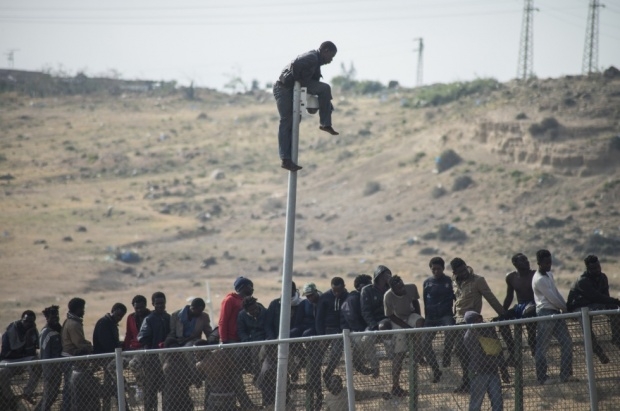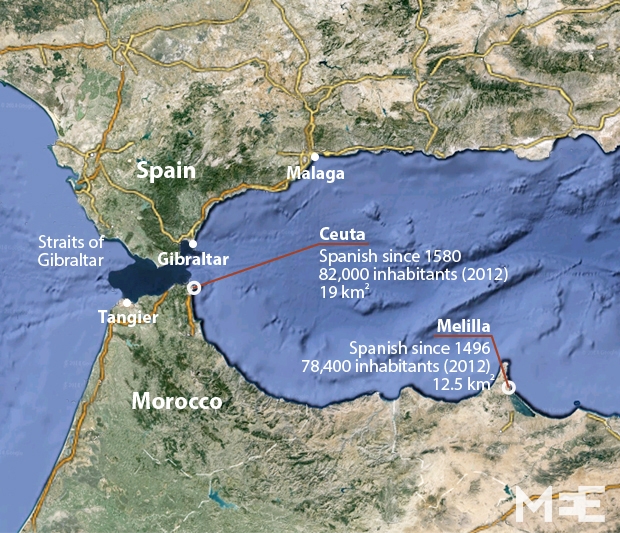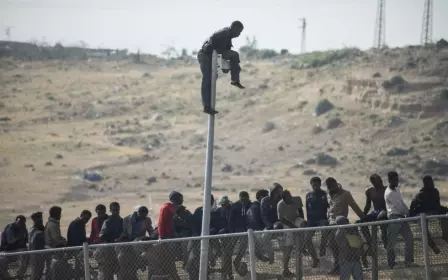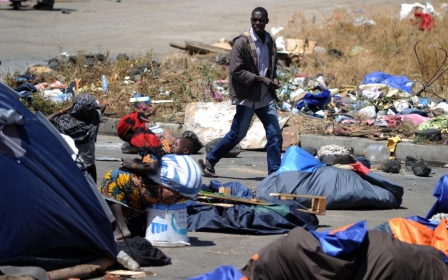Hundreds of migrants breach Morocco-Spain border

More than 400 migrants stormed across a towering, triple-layer border fence from Morocco into the tiny Spanish territory of Melilla on Wednesday, one of the biggest crossings in nearly a decade, officials said.
About 1,000 sub-Saharans joined in the dawn attempt to enter Melilla, a tempting target for Africans desperate to reach Europe as it forms one of the only land crossings along with another Spanish territory, Ceuta, to the west.
More than 400 of the migrants managed to breach the three layers of seven-metre (23-foot) high border fence, a Spanish government spokesman for the territory told AFP.
Morocco has started building a blade-topped wall near the Spanish territory of Melilla in order to deter potential migrants from crossing into Europe, according to reports by local activists on Saturday.
"Construction work for a barrier began about twenty days ago," said Chekib el-Khayari, head of the Rif Association for Human Rights, an activist organisation, confirming press reports. "According to elements gathered by our association, these barriers will be five metres high and will be topped with blades."
Some were treated for "very light injuries" in a clinic at Melilla's immigration reception centre, he said.
The president of the city of Melilla, Juan Jose Imbroda, said an exterior section of the fence was pushed over during the incident.
"The Guardia Civil police deployed in large numbers but it was hard to stop it," he told Spanish public radio RNE.
Imbroda said the Moroccan authorities had cooperated with the Spanish border guard to try to halt the influx.
Melilla, which lies on the northern coast of Morocco, is enclosed by an 11km long border fence running in a semi-circle up to the Mediterranean.
Nevertheless, migrants gathering in large numbers on the Moroccan side have repeatedly managed to breach the defence.
Migrant centres swamped
On 18 March, about 1,000 migrants rushed the fence in foggy weather and some 500 migrants managed to get across, the largest number since 2005, Spanish authorities say.
Depending on treaties with the immigrants' countries of origin, some are repatriated and others are allowed to stay in Spain.
Meanwhile, they wait in government-run reception centres.
The centre in Melilla is built to house 480 immigrants, but it is now holding about 2,000, Imbroda said. "Imagine the huge problem we will have this morning with 400 more on top of the 2,000 people already there," he said.
Spain's state secretary for security, Francisco Martinez, said in a statement that he was heading to Melilla immediately in view of the mass border crossing.
The number of Africans trying to cross into the two Spanish territories has surged over recent months.
Spain's government has demanded more help from the European Union to deal with them.
On 6 February, about 15 migrants drowned in Moroccan waters while trying to swim to the other Spanish territory in Africa, Ceuta, from a nearby beach.
Rights groups and witnesses accused Spanish security forces of firing rubber bullets at the migrants in the water.
The government admitted using rubber bullets but denied its forces had targeted the migrants directly. It later banned civil guards policing the border from using rubber bullets to repel migrants.
Middle East Eye propose une couverture et une analyse indépendantes et incomparables du Moyen-Orient, de l’Afrique du Nord et d’autres régions du monde. Pour en savoir plus sur la reprise de ce contenu et les frais qui s’appliquent, veuillez remplir ce formulaire [en anglais]. Pour en savoir plus sur MEE, cliquez ici [en anglais].





